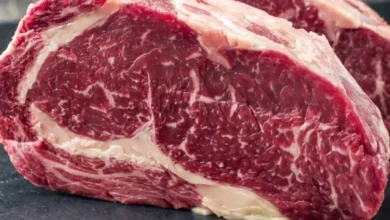
Lamb And Mutton Difference: Which Type Of Meat To Eat?
Lamb and mutton are the types of meat which are often confused with each other by many individuals. But these two meats are very different from each other in their taste and texture. Furthermore, their cooking methods and preparation are also very different. Knowing the differences between lamb and mutton can help you plan your meals better. This article will help you understand how lamb and mutton are different including their age, how they taste, and what type of dishes can they be used in.
What Is The Definition Of Lamb?
Young sheep’s meat which has not reached the age of one year is called lamb. Meat coming from these young animals is soft as such is low in age and can be used easily in several dishes. The other important distinguishing characteristic of lamb is that it is suitable for individuals since it has a mild taste and has several uses including grilling and roasting. The common portions of lamb meat include lamb racks and legs, lamb shanks and cuts.
- Age: Lamb meat is cut from sheep who are year old or less than a year of age.
- Flavor and Texture: The texture and ideal cooking style is tender and quick cooking so that the taste can be mildly sweet.
- Common Cuts: Lamb shank, lamb rack, leg and chops are prime portions of lamb meat.
- Nutritional Value: Lamb is a rich source of protein, iron, zinc, and B vitamins. It also has beneficial fats especially if it is grass-fed.
What Is Mutton?
In contrast, Mutton is meat of a sheep that is older than two years. It has more intense flavor and coarser texture than lamb. Because of its toughness, mutton is ideal for dishes that are slow-cooked and full of moisture, such as stews, curries, and braises. The longer cooking time also helps to soak the gamy taste of the tougher mutton muscle fibers.
- Age: Mutton is eaten off a sheep older than two years.
- Flavor and Texture: A loamy, thick texture that carries a strong taste can be found on mutton, although it takes some time to fully soften.
- Common Cuts: Mutton chops, mutton stew, mutton curry and mutton roast.
- Nutritional Value: Mutton is also a good source of protein, iron and B vitamins. Older sheep carry more fat than lamb meat and that helps with the strong flavor of mutton.
Key Differences Between Lamb and Mutton
- Age of the Animal:
- Lamb is extracted from sheep that is one year of age or younger.
- Mutton is meat from sheep that are older than two years.
- Flavor:
- Lamb’s taste is slightly stronger and is more complex than the taste of mutton.
- Lamb has a gamey flavour which doesn’t have many strong notes while muttons has gamey notes.
- Texture:
- It is worth noting that mutton is tough and has lots of fibers while lamb can be easily cut.
- More importantly, lamb needs to be cooked quickly but mutton needs lot of time to cook.
- Cooking Methods:
- Mutton can be barbecued but when it comes to lamb it has to be sauced up and placed into the oven.
- Slow cooked lamb can easily melt the mouth away, alongside lamb mutton can also be slow cooked.
- Culinary Uses:
- Grilled lamb ribs, roast leg of lamb, curried lamb are popular dishes that use lamb.
- With lamb capturing a greater market share mutton uses a portion of the market churning out curries, stews and even rolled muttons.
- Cost:
- Price of mutton is lower when compared to lamb because lamb is easy to cook and ready to use.
- Surprisingly mutton works out to be cheaper as it is affordable and has no restrictions.
Cooking Lamb and Mutton
Lamb has a very mellow and sweet taste to it which can be noted when working with mutton as they tend to differ. Due to its texture lamb is most commonly grilled but can also be braised or roasted. After that lamb kebabs, lamb chops and roast lamb is the most noted meal followed by an array of spices. Lamb’s natural flavor is matched nicely with garlic, mint, or rosemary.
Due to its distinctly strong flavor, mutton is best prepared through various forms of slow cooking. For example, it is common for mutton curries, stews, and other braised dishes to be flavored with a combination of spices and to be cooked for extended amounts of time to allow the meat to tenderize completely. Various sociocultural practices such as cuisine show the popularity of mutton as it is utilized widely in a variety of South Asian, Middle Eastern, and North African dishes which consist of gravies and sauces.
Nutritional Benefits of Lamb and Mutton

Even though lamb and mutton share similar nutritional benefits, there are differences with regards to their calorie count and fat content.
- Lamb: Lamb is an important source of food that enables the body to meet its high protein demands while also serving as a foundational resource for B vitamins such a vitamin B12, zinc and iron. Furthermore, the Omega 3 fatty acids levels found in grass-fed lambs are remarkable. While the amount of fat in lamb is high, it is less than the amount of fat in mutton.
- Mutton: Mutton is also an excellent source of protein, iron, and B vitamins. Mutton, on the other hand, is more fatty than lamb, especially in older sheep, mutton is fatty.





